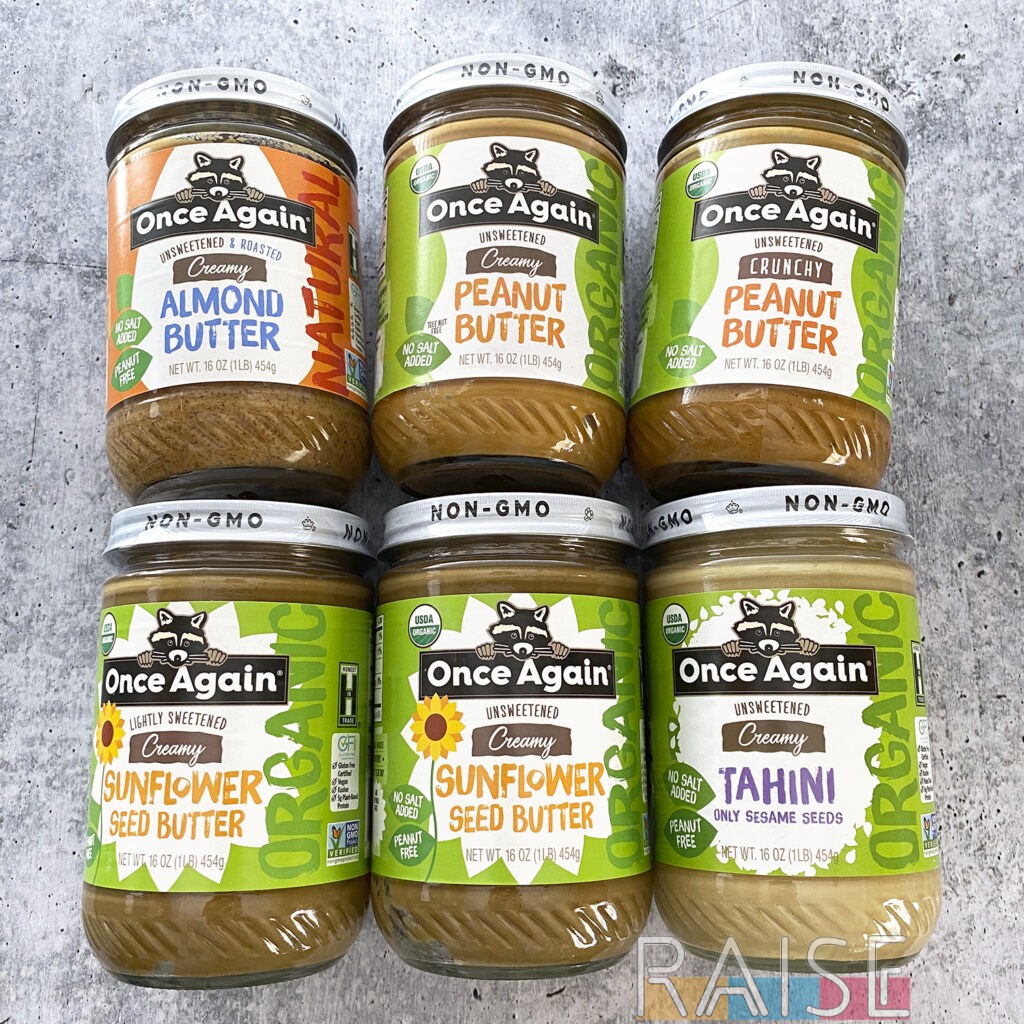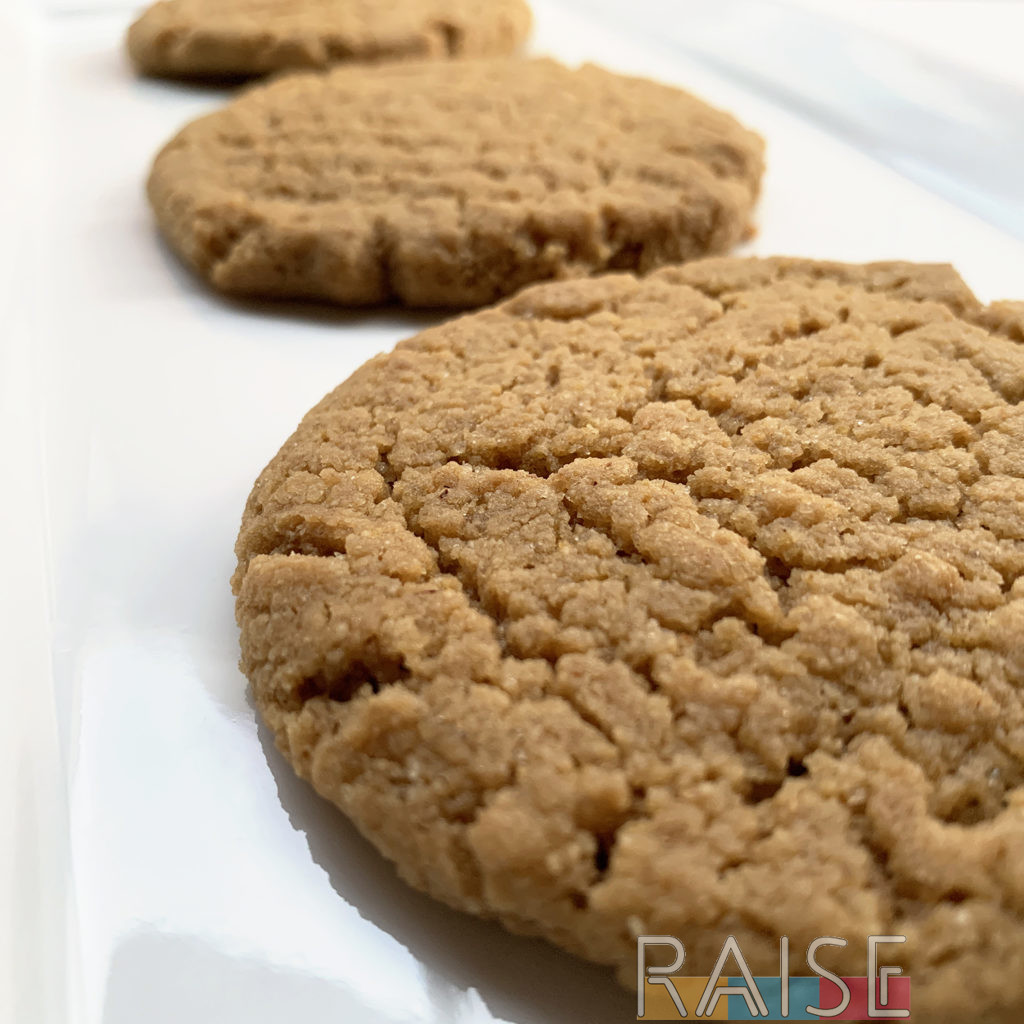Today I want to share the different peanut butter alternatives that are available for you if you’re managing a peanut allergy, or have a child in a peanut free classroom (or peanut free school school or nut free school). The great news is that there are a lot of peanut butter substitutes that are amazing in cooking, baking, and even for spreading on sandwiches.
I’ll be sharing nut based options and nut free options today. Once you’ve reviewed them all, I strongly suggest purchasing what sounds good and sampling them, especially if this is for a child that can have peanut butter but needs peanut free lunches at school. Several of the brands in this article have small pouches available that are a great sampling size, so you don’t have to commit to the whole jar. I also know a few of the brands can send you a sampler pack if you reach out to them.
This video on RAISE shows my kids sampling several peanut butter alternatives so you have an idea of what to expect.
Peanuts Are Not Tree Nuts
Before we go any further, I want to make sure that if you’re reading this and you don’t manage food allergies that you know that peanuts are legumes (part of the bean family) and are not tree nuts like almonds, hazelnuts, and cashews. Other legumes include garbanzo beans (chickpeas), soy beans (sometimes called soya or soybeans), lentils, and peas.
If you’d like to learn more about managing a legume allergy, read this article. If you manage a peanut and tree nut allergy, this article on the hidden sources of tree nuts could be helpful for you. Now, on to the peanut butter alternative options!
Tips for Purchasing Peanut Butter Alternatives
Before you run out to purchase a peanut butter alternative, I have a few tips for you, especially for those of you that are new to managing food allergies, or those that are managing multiple food allergies.
Consider Ordering Online
This article contains a lot of fantastic peanut butter substitutes, however, they’re not all available in stores. Ordering online gets you access to a lot more varieties of peanut butter substitutes. Just be sure to plan ahead as you may need to wait for something to arrive.
Another bonus to online ordering is that some companies have sample sizes and variety packs that you can purchase that aren’t available in stores. So, kick back in your PJs and shop online for peanut butter substitutes (not something any of thought we’d be doing with our evenings as kids).
Check the Fat Content
A lot of the substitutes in this article will have a good fat content, but some less than others. If nutrition and macros are important to you, you’ll want to make sure that what you’re purchasing will meet all of your individual needs. Additionally, if you’re a big fan of organic sprouted foods, you’ll have more options ordering online, or at a local health food store.
The Oil Content Can Vary
Depending on the type of substitute you purchase, you may not be used to seeing so much oil in your jar. Know that the oil content will vary by type of raw material (seeds vs nuts vs legumes), and how it was made.
One big tip, when you first purchase a jar, store it upside down in your pantry. When you finally open the jar, stirring all the way to the bottom and mixing in the bottom of the jar with the top of the jar will be LOADS easier. My kids were blown away when we started storing the jars upside down.
Understand Dedicated Facilities, Dedicated Lines, Shared Facilities, and All the Lingo
One of the biggest issues I’ve seen over the years for those who are allergic to peanuts and/or tree nuts is finding peanut butter substitutes made on safe-for-them equipment. Through my work, I’ve been able to estimate that about 30% of people with food allergies can’t have food made on shared equipment. Whilst this isn’t an official stat, I keep coming back to this number when I poll the free-from community.
Let’s take a quick look at some definitions. For the sake of these definitions, I’ll be talking specifically about the manufacturing of peanut butter and alternative spreads.
Shared Equipment: The physical manufacturing equipment to make the peanut butter is shared with other spreads and butters such as almond butter and tahini.
Shared Facility: The peanut butter has been made in the same facility (think really large room or something like Costco) as other spreads such as cashew butter. A shared facility doesn’t necessarily mean that the equipment was shared, and you’ll have to ask the manufacturer for clarification if needed.
Dedicated Equipment: This means that the brand owns their equipment. They may own it inside of a shared commercial space however. If the brand makes peanut butter and cashew butter, you’d have to find out if each product has a dedicated line, or if all of their products are made on the same exclusive equipment.
Dedicated Facility: The peanut butter is made in an exclusive facility. This may be a gluten free facility, nut free facility, peanut only facility, etc. Only the manufacturer can tell you what’s in this dedicated facility.
Co-Packer (also written Copacker): The peanut butter brand is owned by XYZ, and they have company ABC make their facility alongside products from many other brands. In these situations, a brand has little to no control over what else is made on the equipment or in the facility, and may give you super generic answers when you try to get more details. They may not have all the details at the ready, as they don’t work in (or own) the physical manufacturing facility.
Brands to Investigate
When it comes to a peanut free facility and nut free facility, there are a few brands to investigate: Crazy Richard’s, Spread the Love, and Wellnut Farms. Last I checked, they each manufacture in an “only” facility. That means the peanut butter is made in a peanut only facility, the almond butter is from an almond only facility and the walnut butter is from a walnut only facility.
It’s been a while since I’ve spoken with them, so as always, do your due diligence. Any brand can change anything at any time, however, this is a solution to a common nut and peanut conundrum.
Sample Less Common Substitutes
This article shares a lot of peanut butter substitutes with you. However, I want to encourage you to sample different options that are less common such as granola butter and chickpea butter. You may stumble upon something you absolutely adore.
Peanut Butter Substitute (No Nuts): Seed Based Substitutes
These peanut butter alternatives are perfect if you have a tree nut allergy as well as a peanut allergy. Besides seed based butters, there are more nut-free alternatives which are listed further below in this article. No nut peanut butter substitutes include:
- Pumpkin Seed Butter
- Sunflower Seed Butter (this is a great match for the consistency of most commercial peanut butter)
- Tahini (Sesame Seed Butter, not the same thing as sesame seed paste)
- Watermelon Seed Butter
Unsweetened spreads made from pumpkin seeds, watermelon seeds, and sesame seeds absolutely take some getting used to. They tend to be a bit more bitter and have a very distinct taste that’s not super duper similar to peanut butter.
They are a great 1:1 substitute for peanut butter where function is concerned. If you’re new to seed butters, check out the brand 88 Acres.
Peanut Butter Substitutes: Nut Based Alternatives
For those who can have tree nuts, there are a lot of nut based peanut butter alternative options to choose from. If you find brands that sell organic, raw, sprouted, and so on, you’re more likely to find a brand that’s using peanut free equipment. Here are the nut butters:
- Almond Butter
- Brazil Nut Butter
- Cashew Butter
- Hazelnut Butter
- Macadamia Nut Butter
- Pecan Butter (you may want a sweetened version as pecans can be bitter)
- Pilli Nut Butter
- Pine Nut Butter (technically not a true tree nut but classified as one for food labeling laws)
- Pistachio Butter
- Walnut Butter
Like seed butters, these are all a 1:1 substitute for peanut butter where function is concerned. For taste, my kids say that almond butter is the closest to peanut butter (where tree nut spreads are concerned). Additionally, cashew butter is more mellow, and can work with a wide range of extra ingredients.
Peanut Butter Alternatives: Legumes (Beans), Tubers (Root Vegetables), and Misc
Now for my favorite types of spreads to share: the less common but very allergy-friendly options for children and adults. Let me break them down for you.
Chickpea Butter
Chickpea butter is made from chickpeas (aka garbanzo beans). Most brands who sell chickpea butter also sell a chocolate version that’s like a faux Nutella. Where consistency is concerned, chickpea butter is very close to peanut butter (they are both legumes). Where taste is concerned, not so much. My kids don’t like the flavor of chickpea butter unless it’s very masked.
Granola Butter
Granola butter is usually made from oats (think granola bars, but a spread). It’s becoming a lot more popular these days, but if you’d like a variety of flavours to choose from, your best bet is to order online.
Soy Butter
Soy butter, sometimes called soy nut butter, is incredibly close to peanut butter in flavor, creaminess, consistency, and function. Since they’re both legumes, they’re from the same family, so it makes sense that they’re close. However, soy is considered a top allergen here in the US and around the globe, so it won’t be a viable option for everyone.
Tiger Nut Butter (tuber, not a tree nut, poorly named)
Tiger nuts are tubers, a type of root vegetable. They are NOT tree nuts, and they’re just poorly named. Tiger nut butter is top 9 allergy free, top 14 allergy free, and the closest nut-free, peanut-free option that legit tastes like nuts. Honestly, it freaks a lot of people out when they first try it because the taste is so, SO similar.
However, there are drawbacks to tiger nut butter. First, the cost. It’s not supper common, so supply and demand really hits you in the wallet. Second, It’s not a true spread in the sense of production. All of the other options I’ve shared are usually the ground version of the ingredient (peanut butter = ground peanuts). However, tiger nut butter is actually oil + tiger nut flour.
That’s because tire nuts in their raw form are incredibly hard, meaning they have to be broken down first into something else before they can become a creamy spread. Also, do not eat a spoon of tiger nut butter. It’s not like the other spreads that you can just eat a spoon of and be happy. If you really want to eat it by the spoon, mix organic maple syrup or raw honey into it first. Trust me on this one.
Coconut Butter: A Somewhat Special Product
There are a few things to note about coconut butter. First, as of January 1, 2025, coconut is no longer classified as a tree nut for food labeling laws here in the United States. That means you may see it make more appearances in allergy friendly foods including snacks and spreads.
The other big note to take is that coconut butter doesn’t function like any of the other spreads and butters mentioned in this article. It’s much harder, and therefore, may not be the best choice for sandwiches as it’s difficult to spread on bread. Additionally, most coconut butter sold in stores is flavoured (and contains added sugars), and you may not like all of the options.
Should you want to try coconut butter on a sandwich, try warming it up first to make it easier to spread, or, mix it with a something else to help it loosen up a bit.
Best PB&J Peanut Butter Substitute
When it comes to stocking your kitchen with the best PB&J peanut butter alternative, I’d suggest starting with:
- Almond Butter
- Cashew Butter
- Chickpea Butter
- Soy Butter
- Sunflower Seed Butter
I’ve given you a few to choose from, as some of you may need a nut free alternative. When it comes to an option that kids and adults can enjoy together, I’d suggest cashew butter because of its creaminess, or sunflower seed butter because of it’s close thickness to peanut butter.
However, if you’re a fan of organic unsweetened products like I am, you may need to jazz up your spread first. I’d suggest organic maple syrup (or raw organic honey) along with a splash of organic vanilla extract or ground vanilla. Adding some flavor to your spread can make a HUGE difference in the long run.
Peanut Butter Substitute for Baking
When it comes to baking treats such as cakes or bakery style muffins that call for peanut butter, know that just about all the spreads I’ve shared in this article are a 1:1 function for peanut butter. Coconut butter and tahini aren’t the best for baking, unless your recipe calls for them specifically.
This means there are lots of varieties to choose from, however, now we have to look at taste. Where taste is concerned, some substitutes will blow others away, or at least, get you a lot closer to the authentic taste of peanut butter. The top substitutes based on taste are:
- Tiger Nut Butter
- Soy Butter
- Almond Butter
You’ll notice there are only three, and that’s because they’re the absolute closest where taste + function are concerned. However, here’s what’s so cool about the substitutes I’ve shared: since just about all of them are a 1:1 sub for function, you can alter the taste of your baked goods. For example, pistachios have an incredible taste and can really help your baked goods stand out.
On the other hand, if you’re baking for someone that struggles with picky eating, cashew butter may be awesome since it’s so mellow in overall flavour when compared to other nut and seed butters. So, go wild and have fun baking with different spreads and see which one(s) you prefer.
Best Peanut Butter Substitute for Cookies
When it comes to peanut butter cookies (or even peanut butter chocolate chip cookies) all of the spreads in this article, with the exception of coconut butter, will be an excellent substitute for function. They can replace the creaminess and fat content of the peanut butter in the original recipe. Even tahini can work because the brown sugar can really help balance it out.
However, where flavor is concerned, here are the top picks for replacing peanut butter in cookies are (in order of closeness):
- Tiger Nut Butter
- Sunflower Seed Butter
- Soy Butter
- Chickpea Butter
- Almond Butter
- Cashew Butter
Now, if you’d like to create cookies that have a new and exciting flavour, the substitutes to try are:
- Brazil Nut Butter
- Macadamia Nut Nutter
- Pecan Butter
- Pistachio
- Pumpkin Seed Butter
- Walnut Butter
Delicious Cookie Ideas
Since I have you here, let me give you a few ideas of how to use different spreads in your cookie recipes.
Snickers Bar Cookies: Brazil Nut Butter + Chopped Almonds + Chocolate Chips + Caramel Sauce (drizzled on top)
Tropical Cookies: Macadamia Nut Butter + Chopped Macadamia Nuts + White Chocolate Chips + Dried Pineapple Chunks (or mango)
Rose Cookies: Pistachio Butter + Chopped Pistachios + Rose Water + Edible Rose Petals + Melted Chocolate Drizzle on Top
Cinnamon Pumpkin Cookies: Pumpkin Seed Butter + White Chocolate Chips + Cinnamon + Nutmeg
Walnut Chocolate Chip Cookies: Walnut Butter + Chopped Walnuts + Dark Brown Sugar (in the cookie base) + Mini Chocolate Chips + Caramel Sauce (drizzled on top)
For each of these ideas, you can adapt a chocolate chip cookie recipe that you have, a peanut butter cookie recipe, or a sugar cookie recipe. Have fun, and if you make one, send me pics. I’d love to see your delicious treats.
Peanut Butter Alternatives for Snacks
Peanut butter can be a common ingredient in several types of snacks. Here are good substitutes to choose from.
Dips
For dips that call for peanut butter, the best substitutes will be chickpea butter and soy butter. From there, cashew butter and almond butter will be the next best options.
Smoothies
If your smoothie calls for peanut butter, any of the options in this article will work for function. For taste, I’d suggest almond butter or tiger nut butter as the top two picks. Cashew butter is the third choice since it lends itself so well to a wide range of flavours.
Crackers
For those who like spreading peanut butter on crackers, your best choice is sweetened sunflower seed butter, followed by soy butter. From there, it’s all about personal taste preferences, as any of the options I’ve shared in this article would function well on crackers.
Fruit
For those who like to dip their fruit in peanut butter, your top replacements will be soy butter, chickpea butter, and sunflower seed butter. That’s because they all have that super thick consistency like peanut butter. If you don’t mind something a little thinner, organic sprouted almond butter is AMAZING with fruit.
Best Peanut Butter Substitutes in Cooking
If you find yourself scrolling through peanut butter recipes wondering how to make them, here are some options for you.
Sauces
If you’re making a dish that calls for some type of peanut sauce, the best substitutes are sunflower seed butter and soy butter. That’s mainly because of the consistency and general taste. Cashew butter is another excellent choice in sauces as its creaminess will really give your sauce a leg up.
Salad Dressings
For salad dressings that call for peanut butter, think about the other ingredients in your salad first. If you want to go the safe route, use cashew butter. It has the most mellow flavour and won’t clash with other ingredients.
The next best choices are soy butter and chickpea butter since they’re in the same family (legume).
Oatmeal
If you’re a fan of stirring peanut butter into your oatmeal, the top two substitutes are tiger nut butter and soy butter. From there, sunflower seed butter, and cashew butter are the next top picks.
However, oatmeal is a lot like the cookie example I listed above. You have the opportunity to really have fun since oatmeal is a blank canvas that screams “get creative with me”. So, look through those cookie suggestions and think about applying them to your oatmeal as well.
Chicken
The richness of peanut butter really lends itself to chicken dishes. For peanut chicken, your best peanut butter substitute will be soy butter. After that, it’s really a toss up because in terms of function, all of the peanut butter alternatives in this article will be a 1:1 function. It’s all going to come down to personal preference and the taste of the butter/spread you select.
Peanut Butter Smoothie Alternatives
For those who can’t have peanut butter smoothies (or have the alternatives I’ve listed), but want to have something with a rich texture, here are a few options. These smoothie ideas are all filling, deliver a good amount of calories, and are packed with nutrients.
- Chocolate Avocado Smoothie
- Maple Banana Smoothie
- Lemon Blueberry Spinach Smoothie
- Strawberry & Pineapple Yogurt Smoothie
- Mint Chocolate Smoothie
- Carrot Smoothie
Let’s talk about that last one because you may be thinking I’ve lost my mind. Over my many years in the free-from field, I’ve had to develop recipes for people with extremely limited diets (think: less than 20 known safe foods to eat). A carrot smoothie is AMAZING. To make it, wash, peel, and cut carrots into pieces that your blender can handle when frozen. Steam the carrots, cool them completely, then freeze them.
Now, use a safe-for-you milk of choice + liquid sweetener + frozen carrots + organic vanilla extract. Blend that and you’re going to have an amazing creaminess that you didn’t realize you could have.
Answering Your Peanut Butter Alternative Questions
What’s the best peanut butter replacement?
I get this question a lot and I wish there were a straight answer, but there isn’t one. In terms of texture, the best peanut butter replacement will be almond butter, cashew butter, sunflower seed butter, soy butter, and chickpea butter. That’s not to say that the other nut butters and seed butters I’ve shared aren’t excellent options, it’s just that those six are the absolute closest (90%+) whilst the rest are more like 80%+.
Where flavor is concerned, I’m told by taste testers that almond butter and soy butter (sometimes called soy nut butter) are the top two choices. However, this is where people get divided because cashew butter for example has an amazing texture, but lacks the taste that the other butters have. Tiger nut butter has an amazing taste but has a gritty texture that none of the other spreads have.
Watermelon seed butter and pumpkin seed butter are ultra creamy, but don’t have an awesome taste. See the problem? Each peanut butter substitute has its own pros and cons so I can’t come right out and say THIS one spread will solve all your problems.
Hopefully that detailed answer helps you decide which peanut butter replacement to try first.
What’s the best peanut butter substitute for a nut allergy?
Your main options for a nut free peanut butter alternative will be chickpea, soy, tiger nut, and seeds. Remember, tiger nuts aren’t tree nuts, but poorly named tubers. Assuming you don’t have a cross reactive issue with other legumes, soy butter will be my top suggestion. My second pick is tiger nut butter, but it has its quirks. The top pro is the taste. It seriously tastes like tree nuts and peanuts had a party, but it’s a vegetable. You can read more about it in this article.
Sunflower seed butter it my third pick for you, but you may need to jazz it up a little. I bought the organic unsweetened butter for my kids and would mix in a little organic maple syrup or raw organic honey to keep them happy.
Does anyone make nut free Nutella?
Yes! For nut-free Nutella, you have a few options. Pulse Power makes a chocolate chickpea spread, as does Field Trip. Oat Haus makes a chocolate granola butter that may fit the bill. Finally, there’s this recipe on RAISE that’s a top 9 free, legume free Nutella option for those that need it.
Are peanut butter alternatives a good source of protein?
Yes! You’ll find that the substitutes I’ve listed in this article provide a wide range of nutrients including protein, calcium, and fiber. Including them in a healthy well rounded diet can lead to some nifty health benefits as well.
Each substitute will have a different nutrition profile, but when comparing them, you’ll find they’re generally pretty close on protein and fat. It’s the vitamins and minerals (magnesium, potassium, calcium, etc.) that will have the biggest difference, along with fiber content.
What’s the best alternative for someone with seed and peanut allergies?
For someone allergic to seeds and peanuts, you’d want to use tiger nut butter (tuber not a tree nut) or a tree nut butter. Depending on if you’re cross reactive with other legumes, chickpea butter and soy butter may not be the best options to start with.
Are all peanut butter substitutes vegan?
Yes, all (unsweetened/raw) peanut butter substitutes will be vegan, vegetarian, and plant based. However, if you’re purchasing something that’s “boosted with protein” or something that’s sweetened, you may run into issues.
You may know that not all sugar is vegan, so if your spread is sweetened, make sure they’re using a vegan sugar. Additionally, if a protein powder is used to boost the content, make sure it’s a vegan protein powder that’s been used. Milk is incredibly common in protein powders, so keep an eye out.
Also know that other products such as granola bars and cookies that contain peanut butter won’t necessarily be vegan or plant-based, so read ingredients carefully.
Are there low salt options for peanut butter alternatives?
Yes! If you need low/no salt goods, the great news is that most manufacturers of peanut butter substitutes offer an unsalted version. Most also offer an unsweetened version as well if you’re interested in low/no sugar foods.
Is shortening a good peanut butter substitute in buttercream frosting?
As a 1:1 substitute, shortening won’t be a good substitute in frosting for peanut butter. If your recipe already calls for margarine or butter, plus peanut butter, the shortening can help replace the fat of the peanut, but not the flavour or function.
You know Oreo cream filling? It’s usually shortening, margarine, and sugar. That’s kind of what you’d be making if you were to use shortening instead of peanut butter. A better option will be tiger nut butter (tuber, not a tree nut), soy butter, sunflower seed butter, or cashew butter. These will all be a 1:1 substitute for the peanut butter in your frosting, and get you the right texture and function.
What’s the best almond-free and cashew-free substitute for peanut butter?
There are quite a few almond-free + cashew-free substitutes to choose from.
Spreads made from beans (chickpea spread and soy butter) are going to be great for function and taste. Be careful when spreading on untoasted bread as they are pretty thick, and I don’t want your bread to tear.
I’d avoid tahini (made from sesame seeds) in a lot of scenarios, and that’s because of its flavor. It’s super creamy, and is a great peanut butter alternative in sauces, cookies, and salad dressings.
Sunflower seed butter is another great all around choice, followed by tiger nut butter (tuber, not a tree nut).
If you’re managing a peanut allergy, or perhaps your child is in a peanut free classroom, get ready to learn all about peanut butter alternatives that can be of service. We’re living in a time where peanut butter substitutes are widely available. Once you’ve reviewed your options, I suggest sampling what’s available. Several brands sell small pouches of their spread so you can give it a go. You can also watch this video on RAISE where we’ve sampled on camera a range of peanut butter alternatives so you know WHAT to expect.
What do schools use instead of peanut butter?
Most schools use SunButter and WOWBUTTER. SunButter is a seed based spread that’s derived from sunflower seeds. It comes in an organic, unsweetened variety, as well as creamy and crunchy.
WOWBUTTER is a soy based (legume) butter.
Both SunButter and WOWBUTTER are brands that offer commercial options geared for schools. They both also offer individual dip-style cups of their spreads.
Does WOWBUTTER taste like peanut butter?
Given that WOWBUTTER is also derived from a legume (soy) the taste and texture aren’t super far from peanut butter. My taste testers have reviewed WOWBUTTER and you can read all about it here. They do a side-by-side comparison with peanut butter as well.
Additional Resources
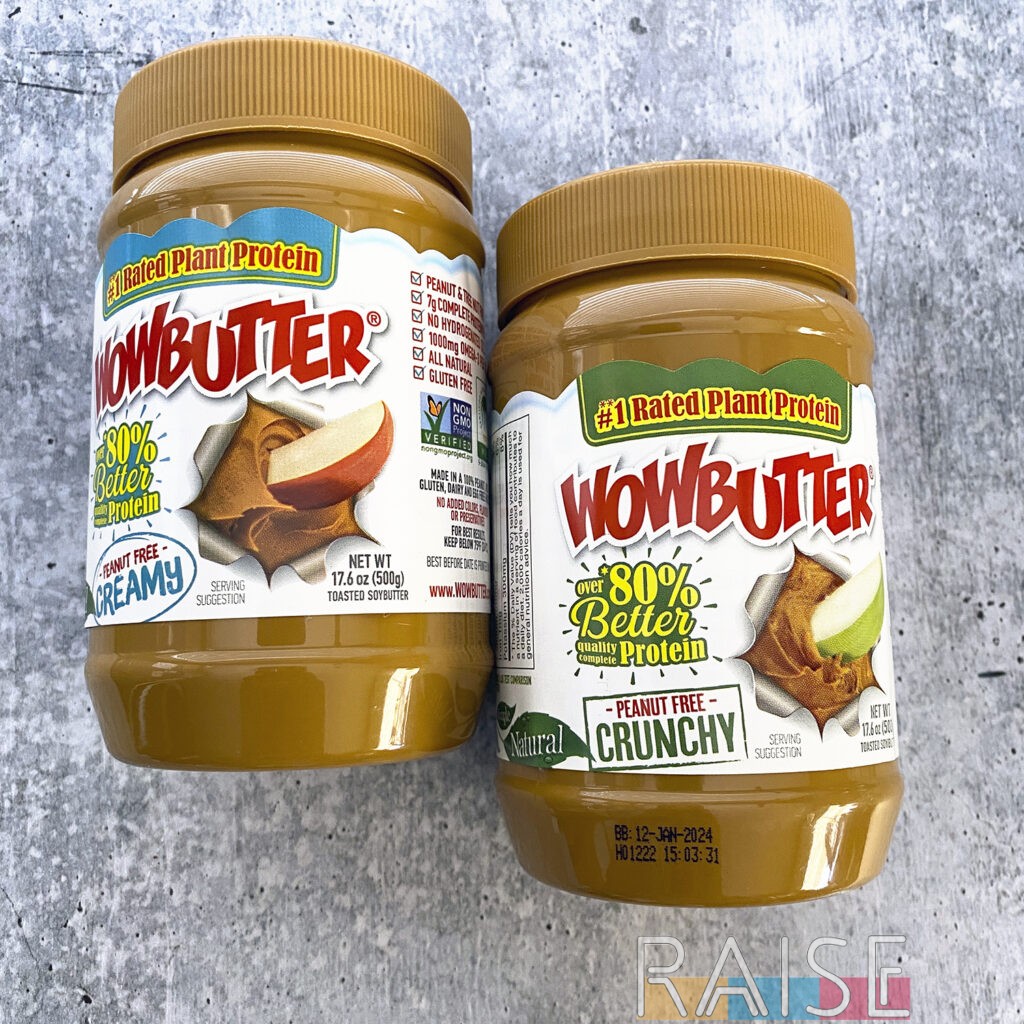 |
 |
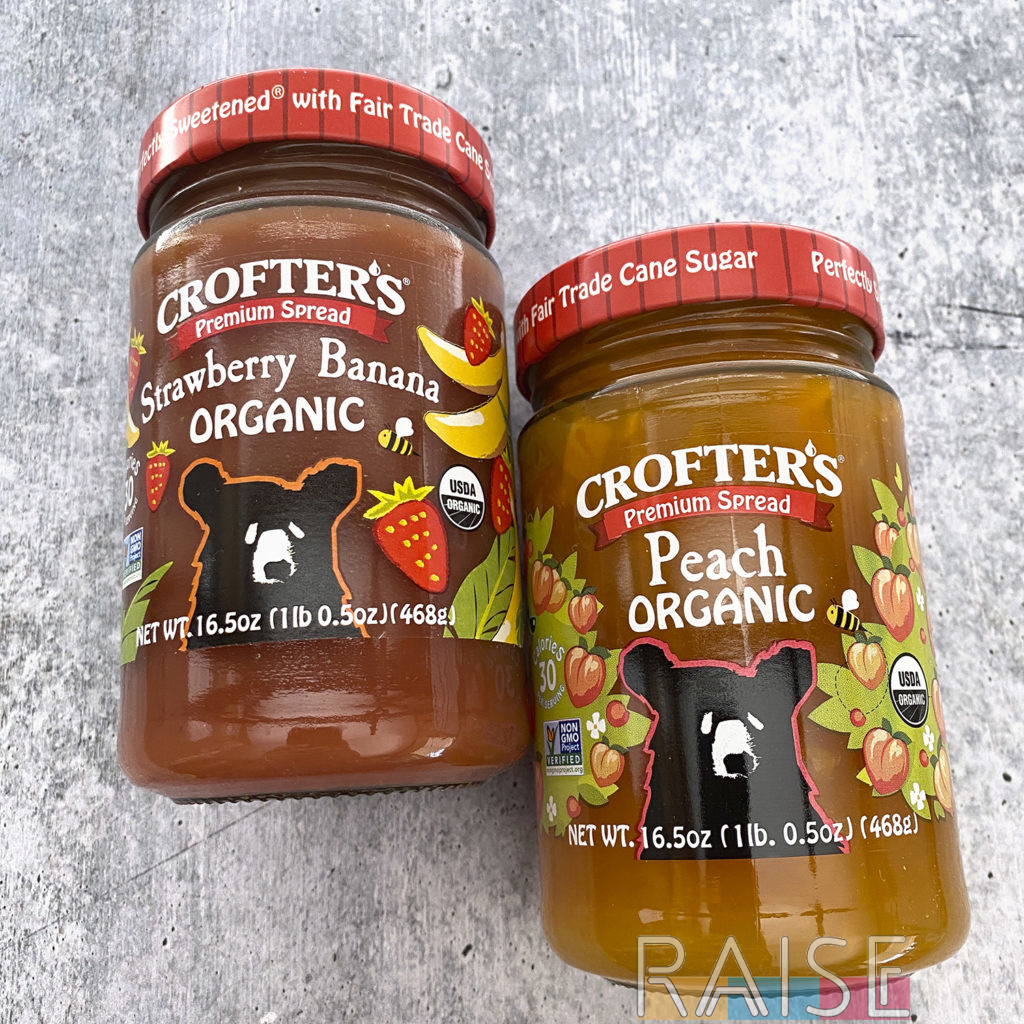 |
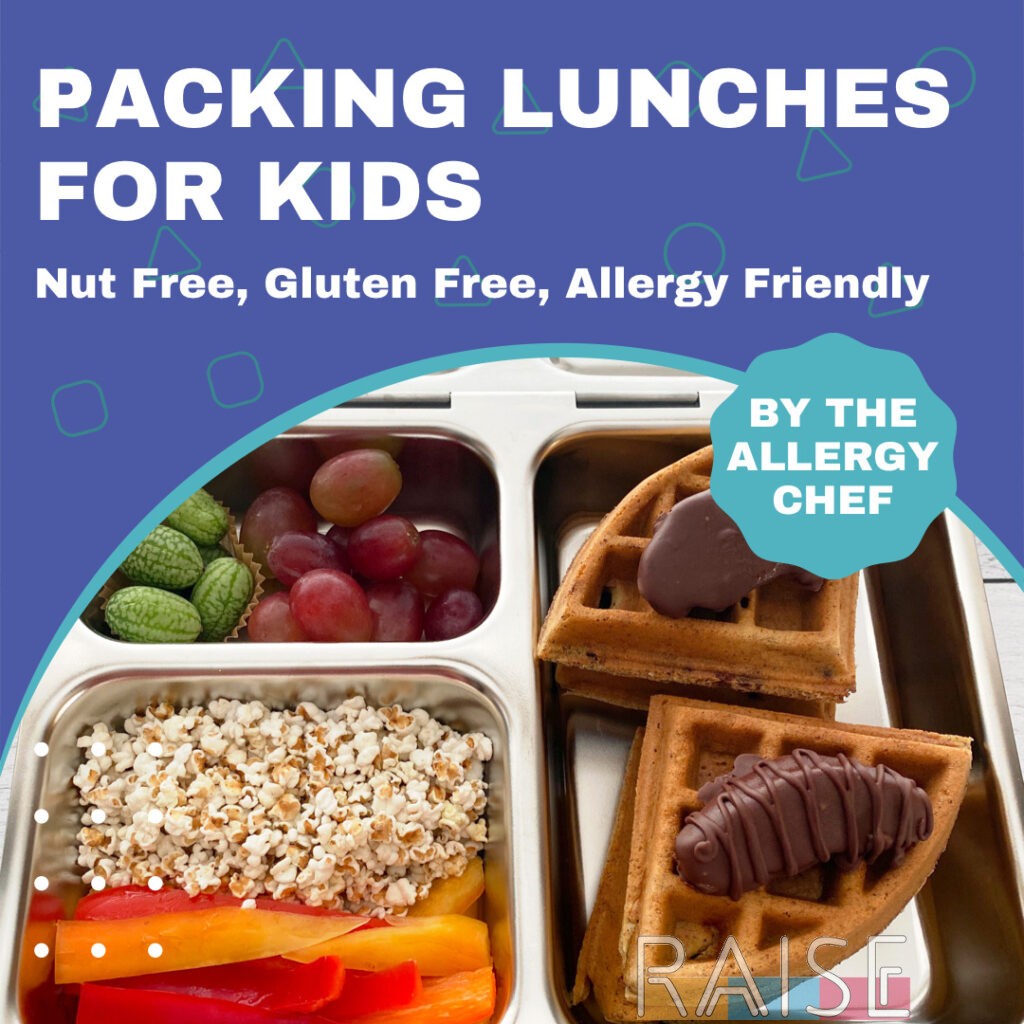 |
 |
 |


